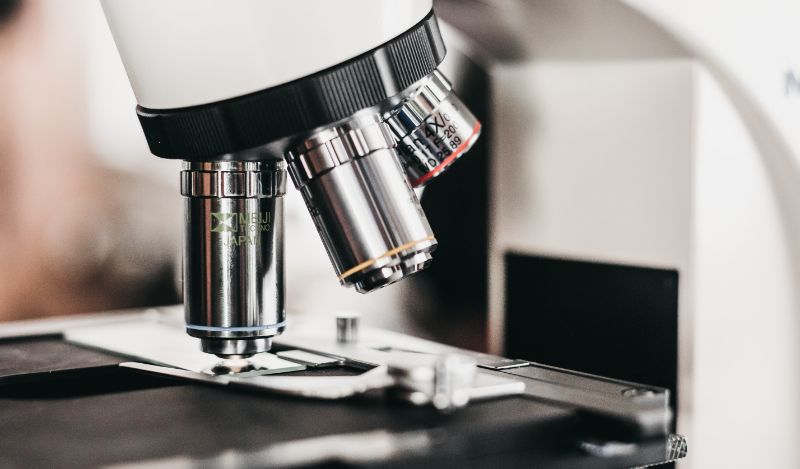How Stem Cell Therapy Treats Back Pain
Stem cell therapy aims to relieve back pain through repairing intervertebral discs, the shock absorbers between spinal segments that often deteriorate with age or injury. As we grow older or develop health conditions, these discs can become worn out, leading to spinal compression, pain, and reduced mobility.
Stem cell treatment works by introducing new, healthy cells directly into the damaged area. These cells have the potential to:
- Regenerate damaged tissue
- Reduce inflammation
- Improve disc hydration
- Enhance overall spine function
What Are Stem Cells?
According to the Mayo Clinic, “stem cells are the body’s raw materials – from which all other cells are generated.” These remarkable cells have the unique ability to develop into various cell types in the body. Stem cells are unspecialised cells capable of renewing themselves through cell division, even after long periods of inactivity.
The Stem Cell Therapy Process:
Harvesting stem cells: Typically, stem cells are extracted from the patient’s own bone marrow, usually from the hip area.
Processing and cultivation: The harvested cells are processed in a laboratory to isolate and concentrate the stem cells. In some cases, they may be cultured to increase their numbers.
Injection: Using advanced imaging guidance (such as fluoroscopy or CT scans), the concentrated stem cells are precisely injected into the targeted disc or area of the spine.
Recovery and regeneration: Over time, the introduced stem cells work to repair and regenerate the damaged tissue, potentially alleviating pain and improving function.
Effectiveness of Stem Cell Therapy in Australia
Recent research and developments in stem cell therapy have shown promising results for long-term back pain treatment. While still considered experimental by many in the Australian medical community, there is growing evidence supporting its potential effectiveness:
- Some patients report significant pain relief lasting years after a single treatment.
- Studies have shown improvements in disc height and hydration following stem cell therapy.
- Reduced need for pain medication in many patients post-treatment.
- Potential to delay or avoid more invasive procedures like spinal fusion surgery.
However, it’s important to note that results can vary significantly between individuals. Currently the only stem cell treatment approved for Medicare rebate in Australia is a haematopoietic stem cell transplant and only for certain conditions.
Cost of Stem Cell Therapy for Back Pain
One of the most significant barriers to stem cell treatment is its cost. The price can vary widely depending on the specific treatment protocol, the clinic, and geographical location. As a guide, for stem cell therapy in Australia expect to pay anywhere from a few thousand dollars all the way up to $60,000, depending on the provider and the amount treatments required to provide back relief.
It’s important to note that many health insurance policies typically do not cover stem cell therapies, making it a significant out-of-pocket expense for most patients.
Is Stem Cell Therapy Right for Your Back Pain?
Before considering stem cell therapy, it’s crucial to:
- Consult with a licensed medical professional for a proper diagnosis.
- Exhaust more conventional and less expensive treatment options first.
- Consider the experimental nature and high cost of stem cell treatments.
- Research the credentials and experience of the clinic and doctors offering the treatment.
- Understand the potential risks and realistic expectations of the procedure.
Remember, stem cell therapy is not a one-size-fits-all solution. Its effectiveness can depend on various factors, including the specific cause and severity of your back pain, your overall health, and your body’s response to the treatment.
Traditional Treatments for Back Pain
For many individuals, back pain can be addressed with conventional, more affordable methods. These treatments often focus on managing symptoms and improving overall spine health:
- Medication for symptomatic relief: Over-the-counter pain relievers, muscle relaxants, or prescription painkillers for more severe cases.
- Steroid injections for acute pain: Corticosteroid injections can provide temporary relief for inflammation-related back pain.
- Physical therapy and exercise: Strengthening core and back muscles can alleviate strain on the spine and improve posture.
- Alternative therapies: Chiropractic care, massage therapy, acupuncture and yoga can complement traditional treatments.
- Lifestyle modifications: Weight management, ergonomic improvements, and stress reduction techniques.
- Hot and cold therapy: Alternating heat and ice can help manage pain and reduce inflammation.
For chronic or severe cases, more invasive treatments may be considered, such as:
- Radiofrequency ablation
- Spinal cord stimulation
- Surgical interventions (e.g., spinal fusion, discectomy)
Where to Get Professional Advice on Back Pain Treatment
For an honest, professional opinion on back pain treatment options, including the potential of stem cell therapy, consider consulting experienced chiropractors like Drs Michael and David Black. With decades of experience in spine-related issues, they stay up-to-date on the latest treatments and can guide you through various chiropractic options.
Chiropractors can offer valuable insights into non-invasive treatments and help you understand if more advanced options like stem cell therapy might be worth exploring.
To book an appointment with Drs. Michael and David Black, call 03 9509 7691 or book online.
References:
- https://medlineplus.gov/backpain.html
- https://www.mayoclinic.org/tests-procedures/bone-marrow-transplant/in-depth/stem-cells/art-20048117
- https://www.businessinsider.com.au/rogue-australian-clinics-are-charging-up-to-60000-for-unproven-stem-cell-therapies-2016-3
- https://www.dvcstem.com/post/stem-cell-therapy-cost-2020
- https://www.healthdirect.gov.au/stem-cells

